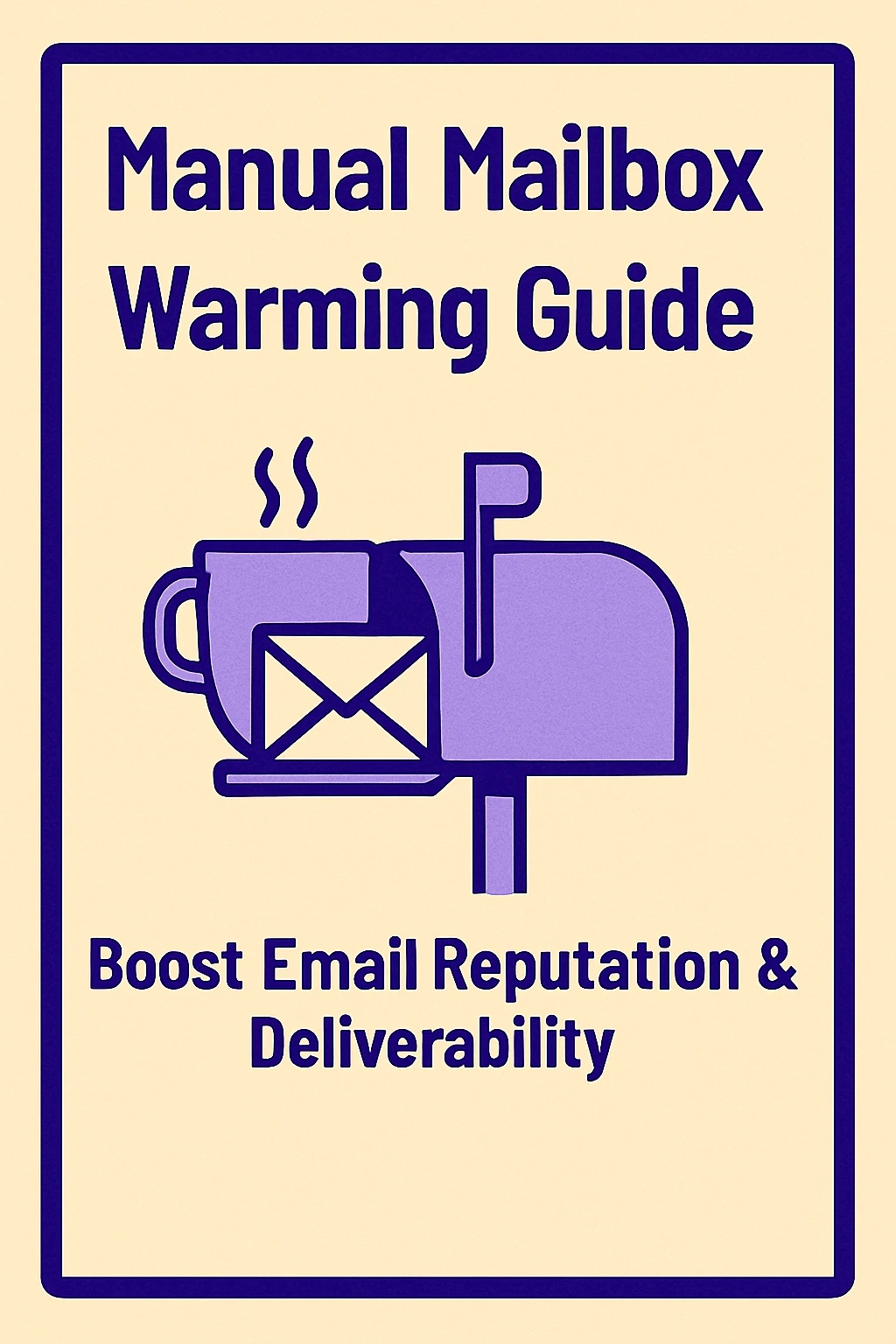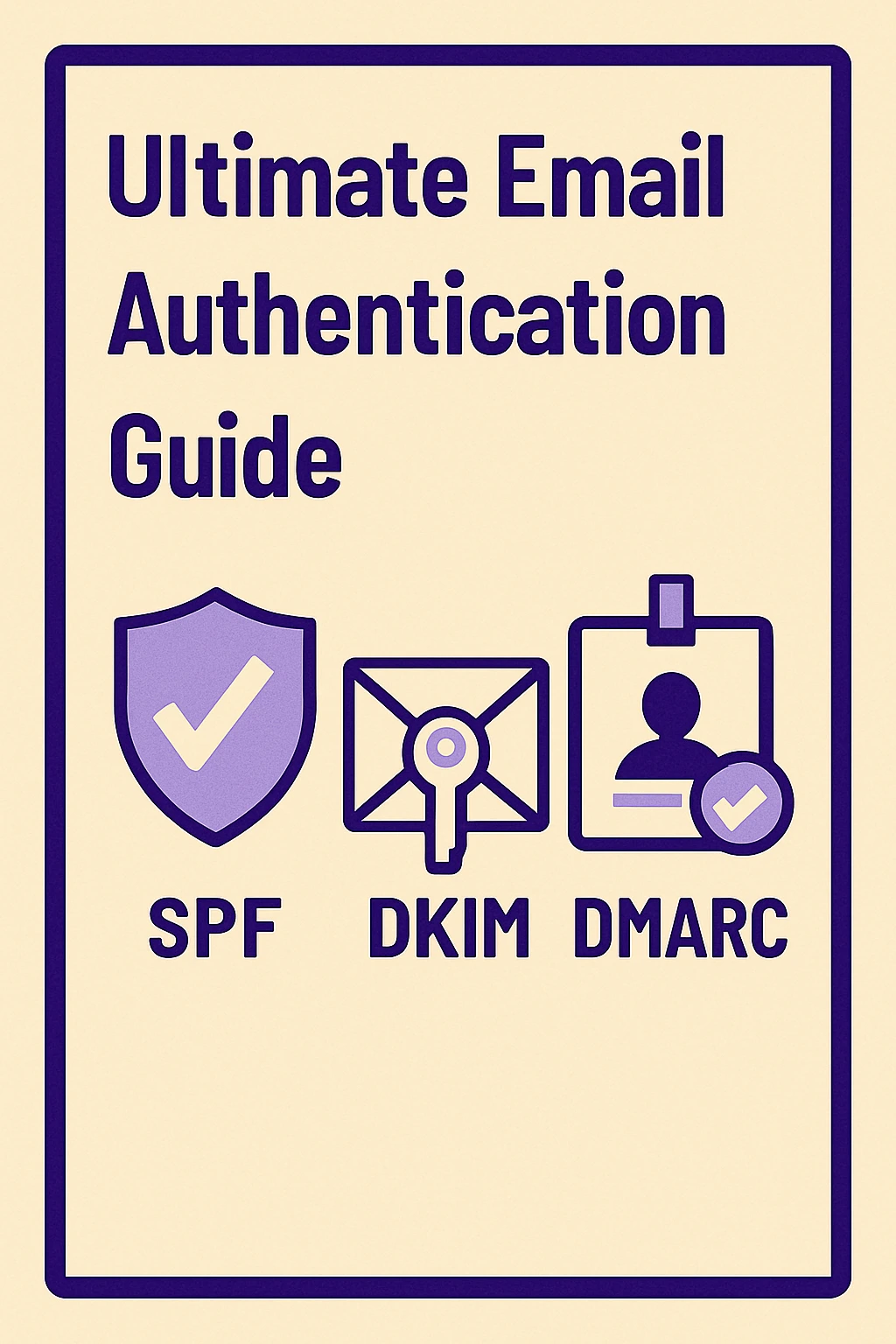Mastering Email Marketing Flows for High Sales
This in-depth guide explores how to master email marketing flows to boost engagement, build stronger customer relationships, and drive more sales. Whether you're new to automation or looking to improve existing sequences, this post walks through the key types of email flows—like welcome series, cart recovery, and re-engagement—and shows you how to build, optimize, and measure them effectively. You’ll also discover top tools like MailKarma.ai, Mailreef, InfraForge, and Mission Inbox to help scale your email strategy in 2025 with better deliverability, automation, and compliance. Perfect for marketers, ecommerce brands, and CRM strategists ready to turn emails into consistent revenue engines.

Most emails get ignored. They sit unread, deleted, or skimmed past in seconds. But the truth is, email can still be one of the most powerful tools in your marketing strategy—if you use it right. And the secret? It’s not just in what you send, but when and why you send it. That’s where email marketing flows come in.
Email flows are not mass blasts. They’re smart, automated sequences tailored to your audience’s actions—whether someone just signed up, browsed a product, left something in their cart, or made a purchase. These flows meet people at the right time with the right message. That’s how you build connection, trust, and sales.
In this guide, you’ll discover:
- What email marketing flows are
- The types of flows that drive real revenue
- How to create, optimize, and scale them
- Which tools support long-term success
What Are Email Marketing Flows?

Definition & Purpose
Email marketing flows are automated email sequences triggered by a user’s behavior. Think of them like a digital concierge—responding based on what someone does on your site. From a welcome email to a post-purchase check-in, these flows operate behind the scenes, guiding your subscribers and customers without manual effort.
Why Email Flows Outperform One-Time Campaigns
One-off campaigns go to your entire list. Everyone gets the same thing, regardless of where they are in their journey. Email flows are different. They:
- React instantly to user behavior
- Personalize every step
- Are measurable and testable
- Drive higher open and click-through rates..
You build flows once and then continuously improve them, making your emails smarter over time.
Core Types of Email Marketing Flows That Drive Results
Welcome Flow
Your first impression matters. A welcome email series sets the tone for your relationship with new subscribers.
How to Create a High-Converting Welcome Series
Send 3–5 emails:
- Greet them: A warm thank you, and what to expect.
- Show value: What makes you different?
- Social proof: Reviews, success stories, or media mentions.
- Highlight products or services: Help them explore.
- Invite action: Offer a clear next step.
No hard selling. Just authentic value.
Abandoned Cart Flow
Shoppers abandon carts all the time. But you can bring them back.
Timing, Copy, and Incentive Tips
- 1st email (1 hour later): A quick reminder with visuals
- 2nd email (24 hours later): Add urgency or a testimonial
- 3rd email (48 hours later): Offer a discount or free shipping
Keep it helpful. Make returns easy.
Post-Purchase Flow
Your job isn’t done after the sale. Follow up with a post-purchase flow to deepen loyalty.
Building Loyalty and Upsells Through Follow-Ups
- Thank them personally
- Offer care tips or a how-to guide.s
- Suggest related products
- Request a review once they’ve received the product.
Build trust first, then revenue.
Browse Abandonment Flow
They looked but didn’t add to the cart. That’s still a warm lead.
- Remind them of what they viewed.
- Recommend similar or trending items.s
- Add reviews or product benefits.
Don’t overdo it—subtlety wins.
Re-Engagement / Winback Flow
People stop engaging. That’s normal. The trick is getting them back—or letting them go.
How to Win Back Cold Subscribers Without Burning Your List
- Acknowledge the time gap
- Remind them of your best offer.r
- Add an incentive to return.
- Offer to unsubscribe easily.
It’s about respect and relevance.
Lead Nurturing Sequences
Perfect for longer sales cycles and B2B.
Educate, Build Trust, and Guide to Conversion
- Answer common questions
- Share real customer wi.ns.
- Highlight what sets you apart.
- Drive the next logical step—not the sal.e
How to Build an Effective Email Flow Strategy

Map the Customer Journey
Outline the stages:
- New subscriber
- Potential customer
- First-time buyer
- Repeat customer
- Inactive lead
Match each stage with a relevant flow.
Identify Key Triggers and Events
Trigger-based emails let you react instantly:
- Cart abandoned
- Email clicked
- Signup complete
- Purchase made
These are your flow “on switches.”
Choose the Right Email Infrastructure Tools
Even great emails fail if they land in spam.
Importance of Deliverability, Timing, and Data
MailKarma.ai helps you monitor your sender reputation, so inbox providers trust your emails. It flags issues early, letting you fix them before your reputation suffers.
Use InfraForge for a reliable, high-volume email infrastructure that ensures your flows hit the inbox every time.
Segment Your Audience Based on Behavior
Behavioral segmentation turns good flows into great ones:
- Send different emails to first-timers vs. loyal customers
- Trigger based on the product category viewed
- Use purchase data to personalize
Design and Content Tips to Maximize Engagement
Writing Emails That Feel Personal and Relevant
Skip corporate talk. Write like a human.
- Use first names
- Reference recent activity
- Keep the copy short and clear.
Subject Line and Preview Text Strategies
- Use curiosity or urgency.
- Be direct: “Did you forget something?”
- Preview text should support your subject.t
Strong CTAs that Drive Clicks
Make them visible, easy, and benefit-driven:
- "Grab your 15% off"
- "See what’s back in stock."
- "Watch how it works."
Mobile Optimization Essentials
People open on phones first. So:
- Use a single-column layout
- Keep paragraphs short
- Add clear, tappable buttons.
Measuring the Performance of Your Email Flows
Key Metrics to Track
Open Rate, CTR, Conversion Rate, Revenue per Email
Each tells you something different:
- Open rate = subject line strength
- Click-through rate = content engagement
- Conversion rate = offer appeal
- Revenue per email = true ROI
A/B Testing for Continuous Improvement
Test one element at a time:
- Headline
- CTA
- Timing
- Visuals
Better results come from small tweaks.
How to Spot and Fix Drop-Off Points in Flows
Look for weak spots:
- Emails with low clicks
- Places where subscribers stall
- Subject lines with low open rates
Revise, retest, and rebuild better.
Common Mistakes to Avoid in Email Flow Setup
Over-emailing or Under-emailing
Too frequent? You get ignored. Too infrequent? You’re forgotten. Find your balance.
Ignoring Mobile Users
Don’t assume a desktop. Test everything on mobile.
Poor Flow Logic or Missing Triggers
Double-check logic. A missed trigger = missed opportunity.
Lack of Personalization
Use real data. A personal touch beats a generic one every time.
Best Tools to Power Your Email Marketing Flows in 2025
MailKarma.ai – Reputation insights and inbox protection
See how mailbox providers view your emails. Stay ahead of spam issues. Monitor, diagnose, and fix problems fast.
InfraForge – Reliable email infrastructure
Speed, scale, and uptime. Perfect for growing brands that need consistent performance.
Mailreef – Intelligent flow automation
Build, test, and optimize email flows with a user-friendly interface. Built for ecommerce growth.
Mission Inbox – Scalable delivery and compliance monitoring
Stay compliant and get deep deliverability insights. Essential for regulated or high-volume senders.
Final Thoughts: Create Smart Email Flows That Convert
Email Flows Are Your Silent Sales Engine
While you sleep, your flows welcome, nurture, and convert leads into loyal customers.
Why Optimization Never Ends
Don’t stop testing. Even small changes create big lifts.
Small Tweaks = Big Revenue
One subject line tweak or an added email can change everything.
Want better inbox placement for your flows? Book a demo with MailKarma.ai and protect your sender reputation now.
Need reliable infrastructure to run your flows at scale? Explore Mailreef, InfraForge, and Mission Inbox to power your automation.
Quick Recap
Email marketing flows guide your audience from interest to action with smart automation. Each flow—whether a welcome, abandoned cart, or winback—adds value at the right time.
To make it all work? Rely on proven tools:
- MailKarma.ai for deliverability and trust
- InfraForge for infrastructure and speed
- Mailreef for intuitive automation
- Mission Inbox for compliance and inbox visibility
Build your flows. Measure your results. Improve continuously.
Let your emails work smarter, not harder.
Frequently Asked Questions
What is the difference between an email flow and a regular email campaign?
An email flow is triggered by user actions and sent automatically. A campaign is scheduled manually and sent to a large group all at once.
How many emails should I include in a welcome flow?
Three to five emails work well. Enough to introduce, build trust, and invite action, without overwhelming.
What’s the ideal delay between emails in a flow?
For welcome flows: 1–2 days. Abandoned cart: within hours. Re-engagement: 3–7 days apart. Match timing to intent.
Can I use the same flow for all subscribers?
No. Segmentation is key. Tailor flows based on actions, interests, and behavior.
How do I know if my email flows are working?
Watch open rates, clicks, conversions, and revenue. Review drop-off points. Tweak and test constantly.
What tools are best for building email marketing flows?
Use MailKarma.ai to protect your reputation. Use Mailreef, InfraForge, and Mission Inbox for automation, deliverability, and compliance.
Recent Blogs
FAQs: Everything You’re Wondering About Cold Email Deliverability & MailKarma’s Infrastructure
MailKarma is a dedicated email infrastructure solution built exclusively for cold email outreach. Unlike shared inbox tools or general ESPs, MailKarma gives you complete control over your sending setup—private US IPs, clean domains, and expert-backed deliverability practices. Built by cold email pros, MailKarma is optimized to scale outreach without landing in spam.
Because MailKarma sets up private infrastructure—including custom domains and mailboxes—it doesn’t offer a traditional free trial. However, you can explore the platform, view your dashboard, and test features before provisioning infrastructure. Our private dedicated email servers cost $150 per server plus $0.001 per email sent, making it extremely cost-effective for high-volume cold email campaigns. For Gmail Workspace solutions, pricing starts at $3.50 per email with a 10-email minimum, dropping to $2.50 per email for volumes over 100 emails. This transparent pricing model ensures you only pay for what you use while maintaining enterprise-grade email deliverability.
Yes. MailKarma automatically sets up SPF, DKIM, and DMARC records using best-in-class standards. No technical hassle—our system handles everything behind the scenes, and our support team is always ready to assist if needed.
Every MailKarma subscription includes:
- Automated DNS setup (SPF, DKIM, DMARC)
- Private mailbox hosting
- Ongoing deliverability optimization
- Server monitoring and uptime guarantees
It depends on your monthly sending volume and the number of contacts per sequence. To simplify this, MailKarma includes a volume-based calculator inside the app to help you choose the optimal setup for scale, safety, and inbox placement.
Gmail and Outlook aren't built for cold outreach—they throttle volume, rotate IPs, and limit deliverability. MailKarma gives you:
- Dedicated infrastructure
- Warmed IPs and aged domains
- No shared resources
- Built-in best practices for cold outreach
It's the infrastructure your outreach actually needs.

.png)



